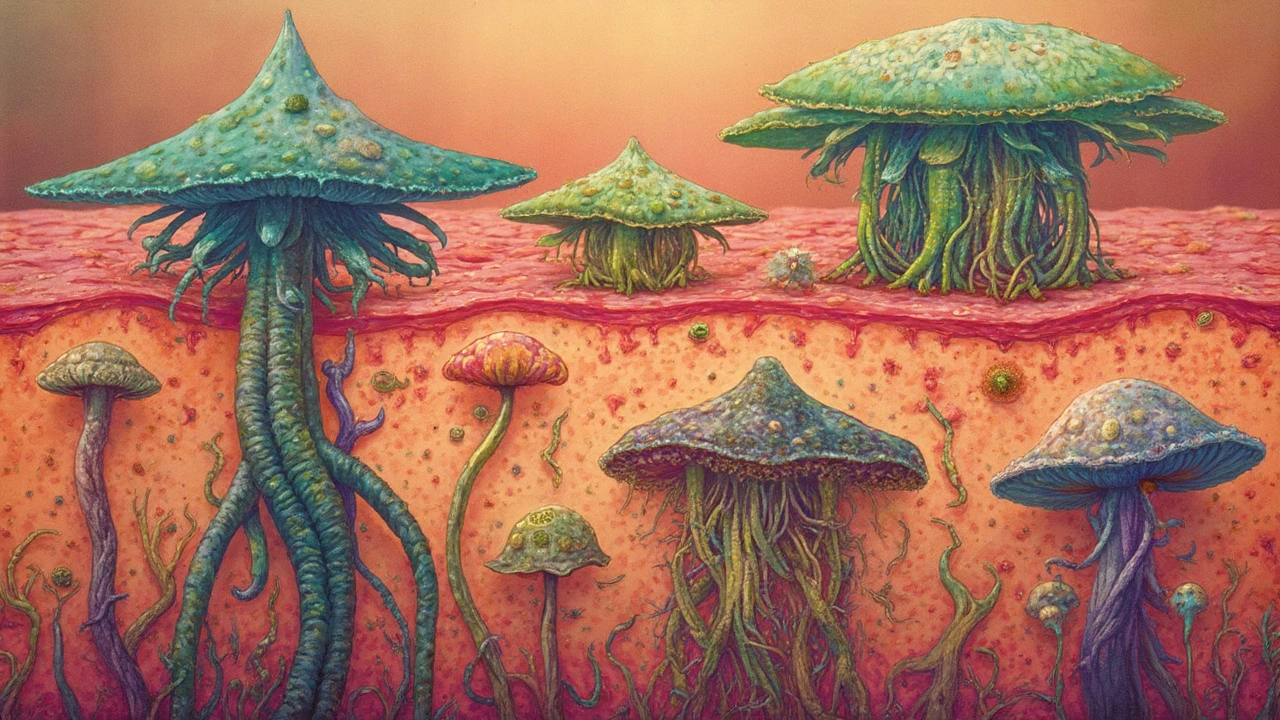Skin Discoloration: What It Is and How to Fix It
Skin discoloration is any change in the normal color of your skin. It can show up as dark spots, light patches, or uneven tones. Most people notice it on the face, hands, or areas that get a lot of sun. The good news is that many of the common causes are treatable, and you can start seeing improvement with simple daily steps.
Common Types of Skin Discoloration
There are three main kinds you’ll run into:
Hyperpigmentation – Dark patches that appear after acne, a cut, or too much sun exposure. Melasma, the brown mask that shows up on the cheeks, is another version of hyperpigmentation.
Hypopigmentation – Light or white spots that can follow a skin injury, eczema flare, or certain fungal infections.
Redness or rosacea‑related discoloration – Persistent red patches, especially on the nose and cheeks, often flare with heat, stress, or spicy foods.
Practical Ways to Even Out Your Skin Tone
Start with the basics: always wear a broad‑spectrum sunscreen of at least SPF 30. Reapply every two hours if you’re outdoors. Sun is the biggest trigger for both darkening and brightening spots.
For existing spots, over‑the‑counter options like vitamin C serum, niacinamide cream, or products with low‑strength hydroquinone can help fade dark areas in a few weeks. Use them after your cleanser and before moisturizer, and give it at least four weeks before expecting results.
If over‑the‑counter creams aren’t enough, talking to a dermatologist opens up stronger options: prescription‑strength hydroquinone, tretinoin, or chemical peels. These treatments speed up skin cell turnover and bring the pigment back to a normal level.
Professional procedures such as laser therapy, intense pulsed light (IPL), or micro‑needling can target stubborn spots. They work best when your skin is already clean, moisturized, and protected from the sun.
Don’t forget lifestyle tweaks. Cut back on smoking, limit alcohol, and eat a balanced diet rich in antioxidants (berries, leafy greens, nuts). Hydration helps your skin repair itself faster.
Finally, keep a simple routine: cleanse, treat, moisturize, protect. Consistency beats occasional “miracle” products every time. If you notice any irritation, stop the product and give your skin a break – over‑reacting can worsen discoloration.
Skin discoloration can feel frustrating, but with the right mix of sun protection, topical care, and occasional professional help, you can restore a smoother, more even tone. Start small, stay consistent, and watch the changes add up.
-
 VIEW POST
VIEW POSTTop Fungal Infections That Cause Skin Discoloration
Feb, 25 2025|5 CommentsFungal infections can be more than just an itchy annoyance. They often result in unsightly skin discoloration, changing the way our skin looks and feels. Various types of fungi can invade the skin, causing colors to shift and leading to personal discomfort and potential social embarrassment. Understanding these infections can help in recognizing symptoms early for timely treatment. Learn about the common fungal culprits that cause skin discoloration and how to manage them effectively.